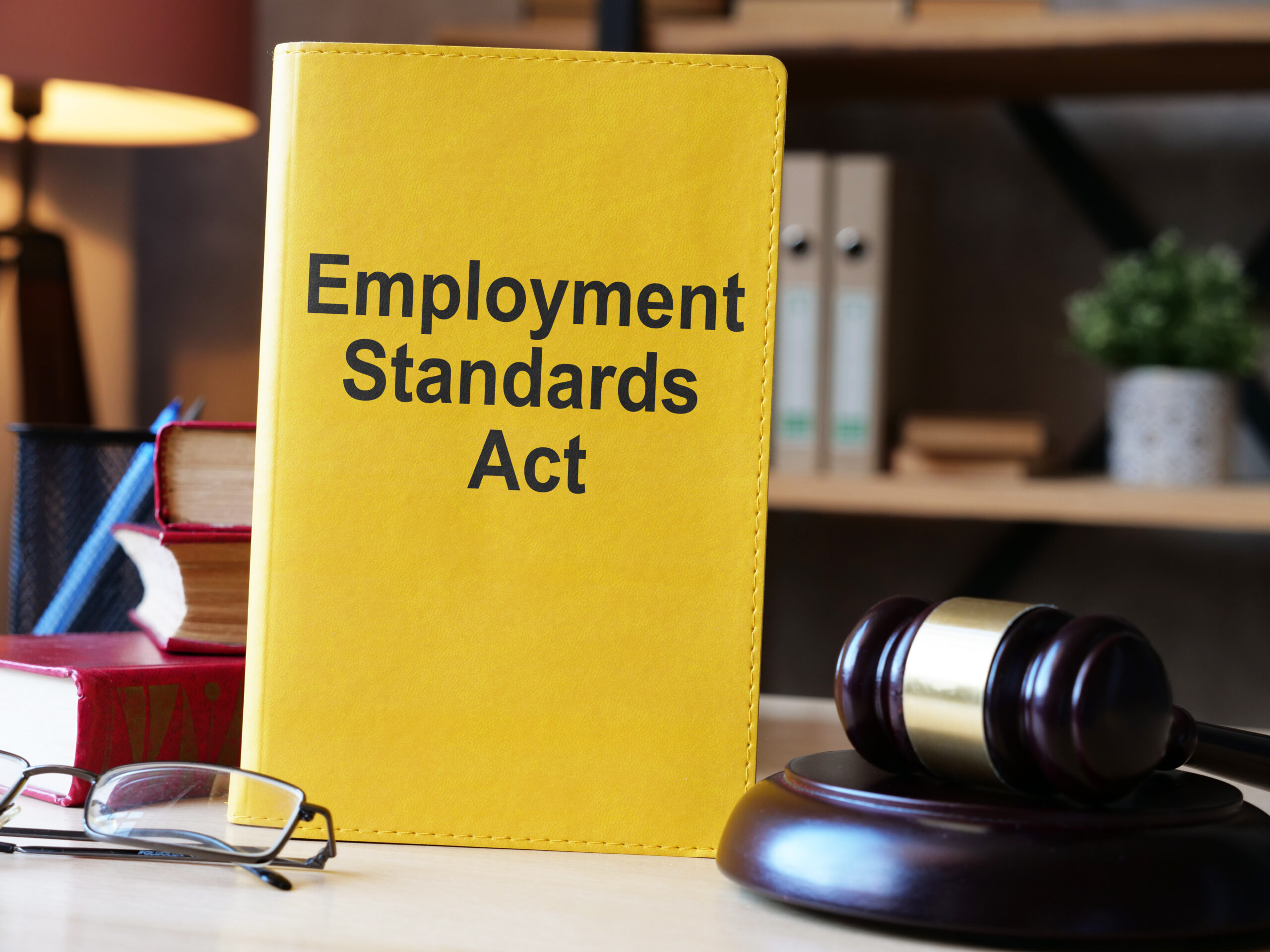As we’ve said, nothing beats the knowledge of a seasoned labour lawyer when you’re trying to navigate your way through Canada’s labour laws. But if you can’t afford one as you’re starting out, these snippets should help you gain a basic understanding of your legal obligations as an employer. In this, the third part of our series on Canadian Labour Laws for Small Business, we’ll take a look at the relevant federal and provincial acts and how they affect you as a business owner, and let you know where to go to get more information.
Employment Standards Act – The purpose of this legislation is to provide the minimum standards, legal rights and responsibilities of both employers and employees. It covers issues such as minimum wage, leaves, termination, hours of work, and more. Most of which was covered in Part One of the series. Every province and territory in Canada has different employment standards specific to their area and each business should follow the laws of the province where they are located. Below is a list of provincial and territorial employment standards in Canada that you can click on to learn more about.
- Provincial Standards
- Alberta Employment Standards
- British Columbia Employment Standards
- Manitoba Employment Standards
- New Brunswick Employment Standards
- Newfoundland Employment Standards
- Nova Scotia Employment Standards
- Ontario Employment Standards
- Prince Edward Island Employment Standards
- Québec Employment Standards
- Saskatchewan Employment Standards
- Territorial Standards
Occupational Health & Safety Act – The main purpose of the Act is to protect workers from health and safety hazards on the job. It sets out duties for all workplace parties and rights for workers. It establishes procedures for dealing with workplace hazards and provides for enforcement of the law where compliance has not been achieved voluntarily. Under the Occupational Health and Safety Act (OHSA), small business employers have many of the same duties as any other employer, including the following:
- to do everything they reasonably can to protect their workers in each situation
- to inform, instruct and supervise workers to protect their health and safety
- to make sure that every worker and supervisor takes the required training, including basic occupational health and safety awareness training, and keep records of that training
The first basic act in complying with OSHA is to put up the proper posters. What posters you put up depends on the size of your company. What else the act requires also depends on the size of your company and can involve:
- Writing and maintaining workplace policies – If you regularly employ 6 or more workers you must write and post health and safety, violence and harassment policies, and make them available to your workers.
- Create a program to implement the policies
- Review the policies annually
- Offer mandatory health and safety awareness training – By law, all workers and supervisors must take basic occupational health and safety awareness training. This helps them to understand their health and safety rights and meet their responsibilities. There are plenty of online resources to help you with this training.
- Select a health and safety representative or create a joint health and safety committee – JHSC – (over 20 employees) – Under the Occupational Health and Safety Act, workers and employers must work together to keep the workplace healthy and safe. One way to do this is by working with your workplace health and safety representative, or with your joint health and safety committee.
- Certification (over 20 employees)– at least one worker representative and one management representative on the JHSC must be certified. To do that they must take a 2-part training program, approved by the Ministry of Labour, Training and Skills Development’s Chief Prevention Officer.
While this certainly doesn’t cover the whole Act or all of your responsibilities as an employer, it’s a good start. For all the information you’ll need, go to the source.
Employment Equity Act – The purpose of the Act is to achieve equality in the workplace so employment opportunities are not denied for reasons unrelated to ability, and to correct disadvantages in employment experienced by women, aboriginal people, people with disabilities and members of visible minorities. The Act gives effect to the principle that employment equity means more than treating persons in the same way but also requires special measures and the accommodation of differences.The Canadian Human Rights Commission (CHRC) is responsible for the enforcement of the Act. It is mandated to carry audits to ensure that employers are in compliance with the law and are pursuing the implementation of their employment equity plans. Although the CHRC primarily uses dialogue and persuasion as means of getting employers to commit to Employment Equity, it can also request that they sign written undertakings. The CHRC is also empowered to prosecute non-complying employers by referring their case before the Employment Equity Review Tribunal created under the EEA.
Human Rights Act – As Canadians we are all protected under the Human Rights Acts and charters. Under the rules set out by the governing Acts, your business is required to ensure that all those who interact with the business are treated equally regardless of race, ancestry, place of origin, colour, ethnic origin, citizenship, creed, sex, sexual orientation, disability, age, marital status, family status and record of offences.gender, religion, age or any of the other protected grounds. Among the other rights outlined in the Act, employees are guaranteed these workplace rights; a safe working environment, the right to fair remuneration and equal pay for equal work, the right to organise and participate in collective bargaining and the right to be protected from forced labour and trafficking. In addition, workers have these rights specific to Health & Safety:
- The right to know about hazards in the workplace.
- The right to participate in OH&S activities.
- The right to refuse unsafe work.
- The right to no retaliation(discipline or being fired) for raising OH&S concerns.
There is A LOT to know about Canadian labour laws. Luckily you don’t need to know all of it. There are lawyers for that! And until you can afford one, the information in this series – while not intended to be solid legal advice – should be enough to get you started, and point you in the direction for more information.





